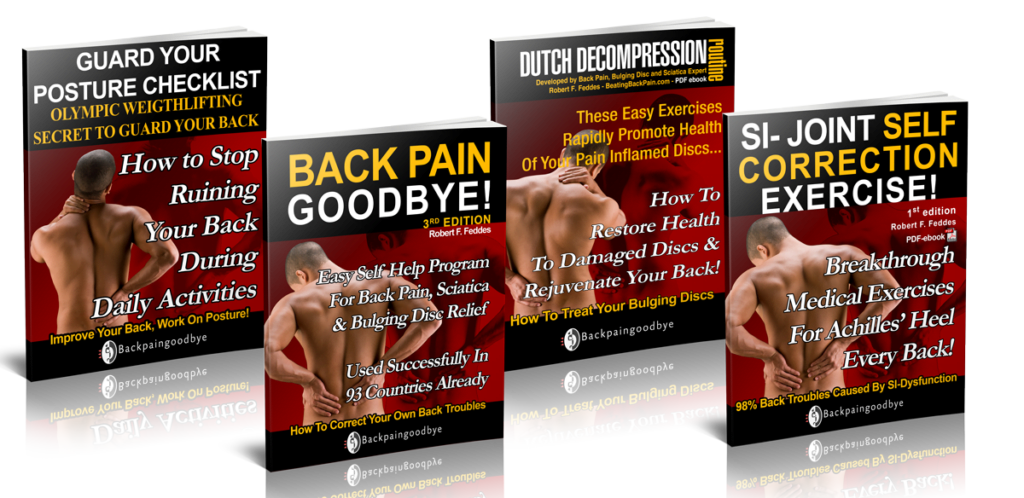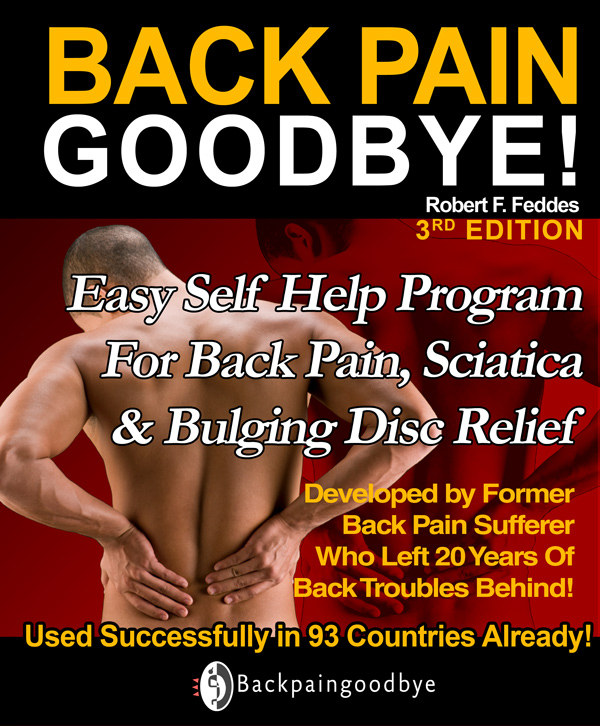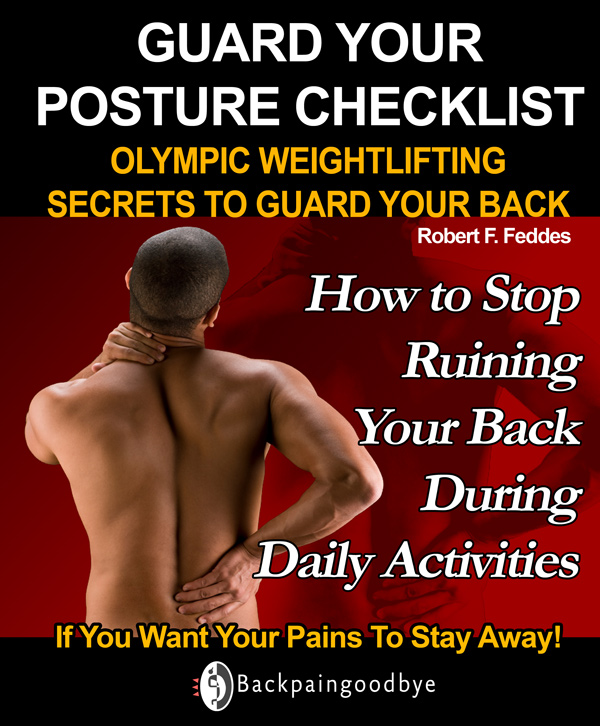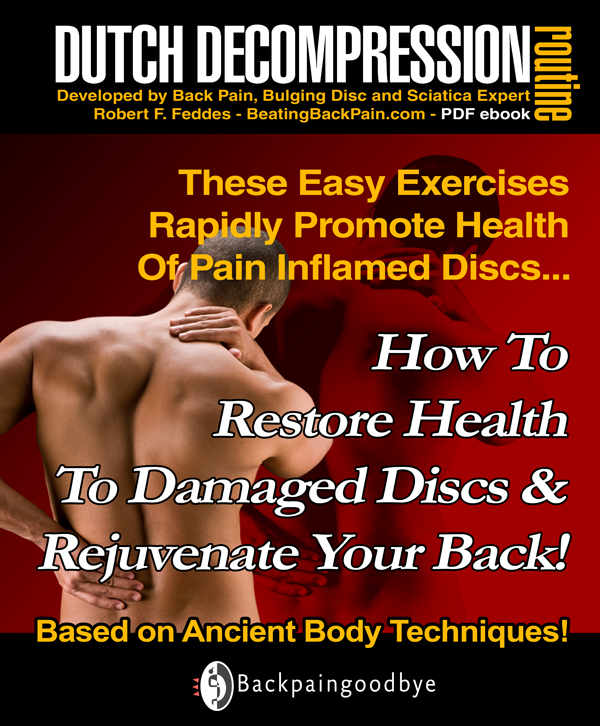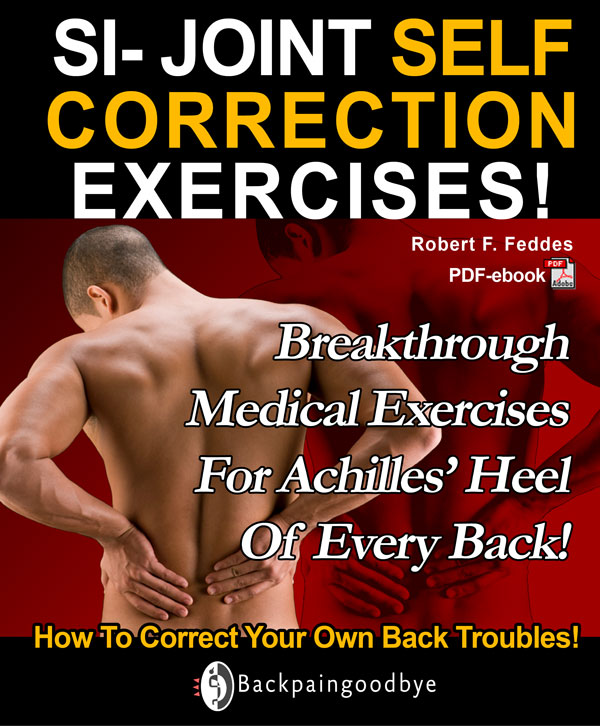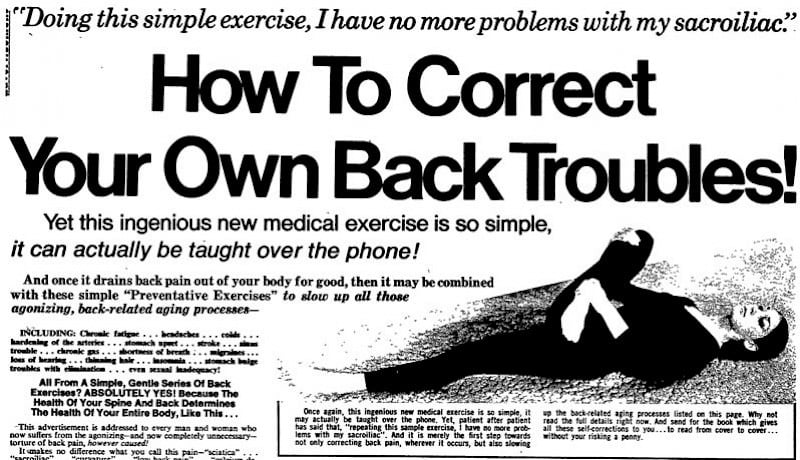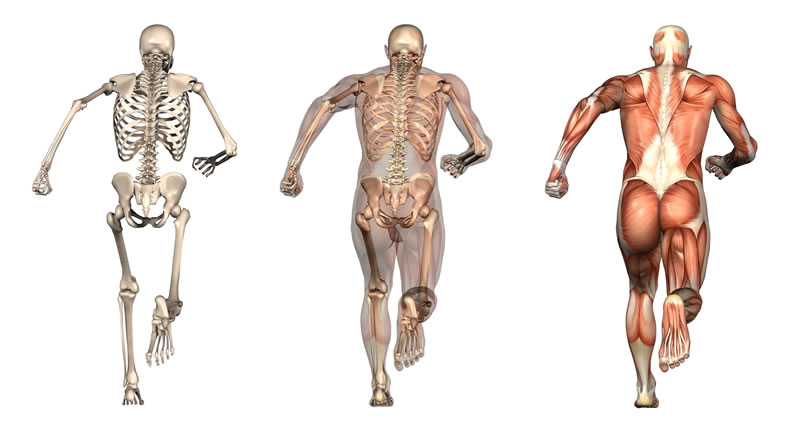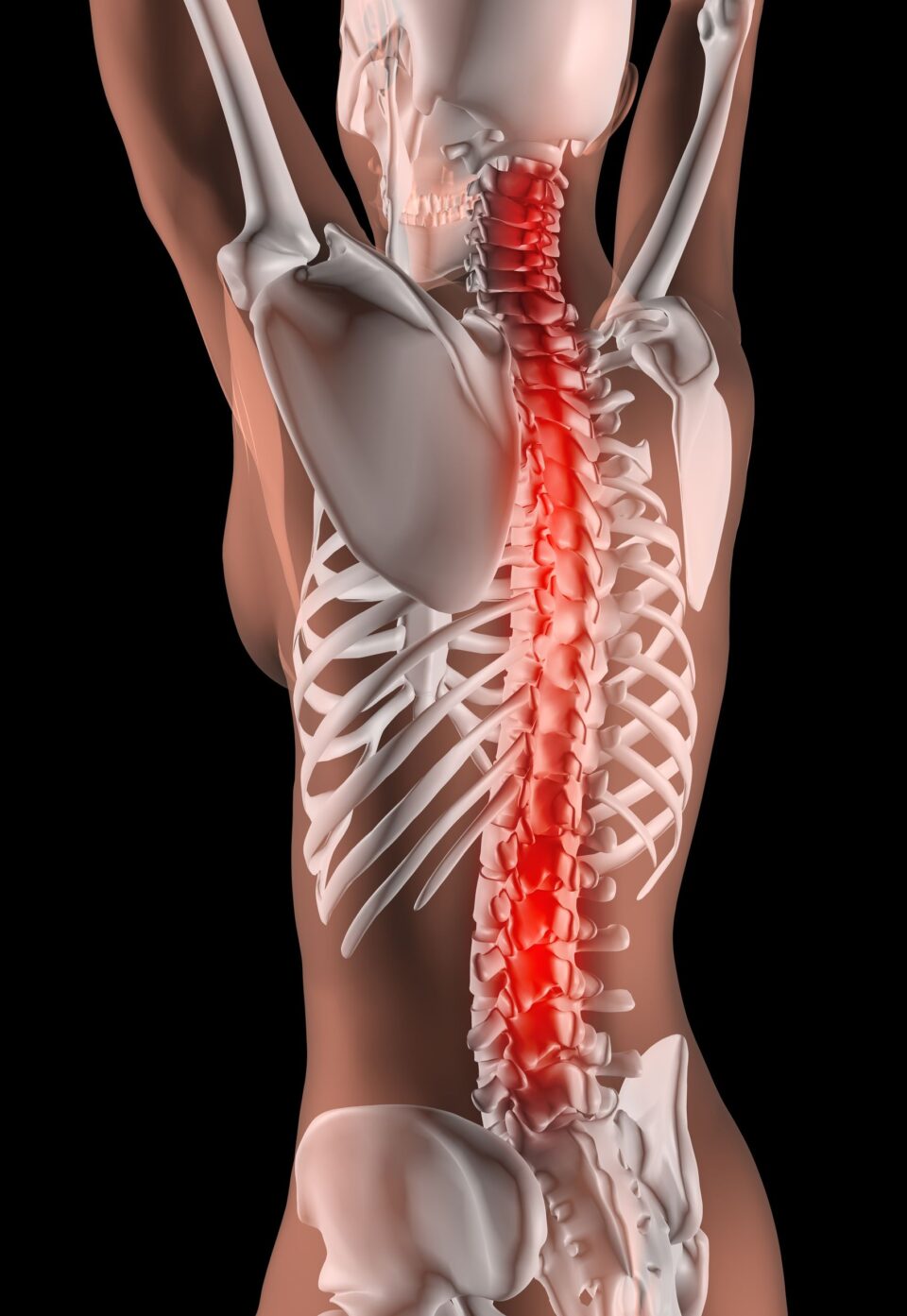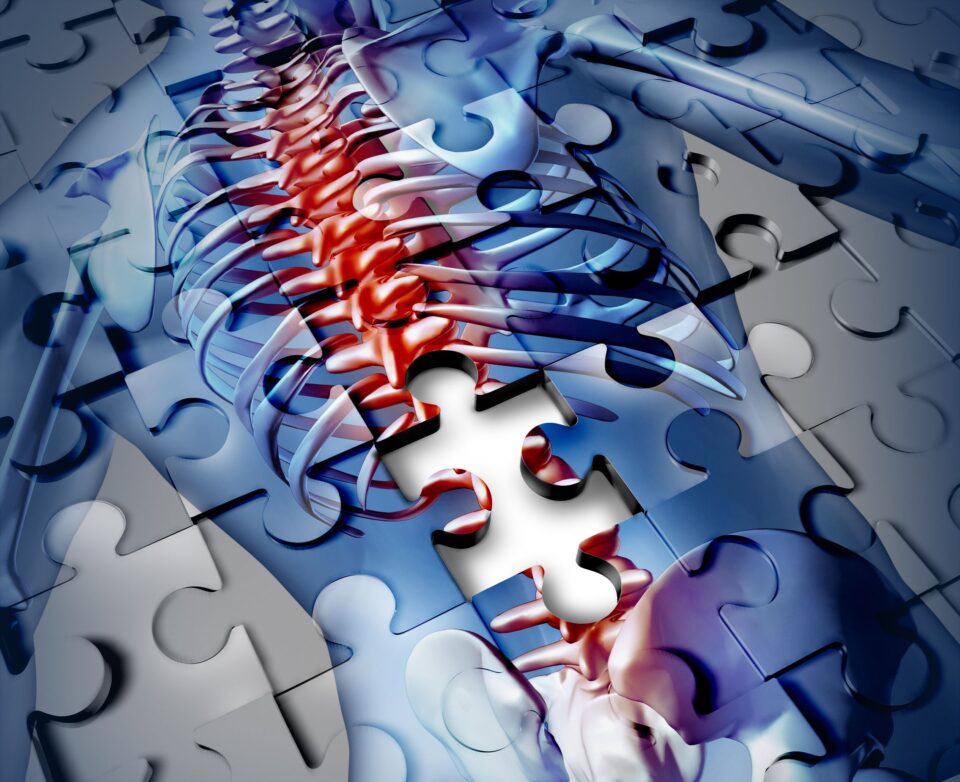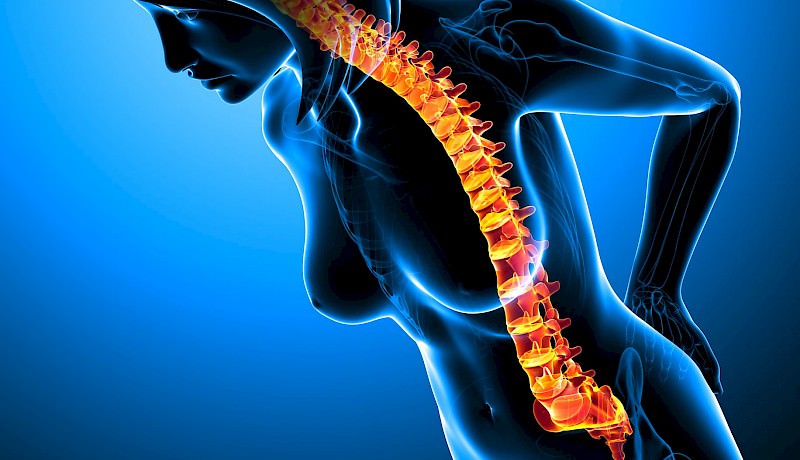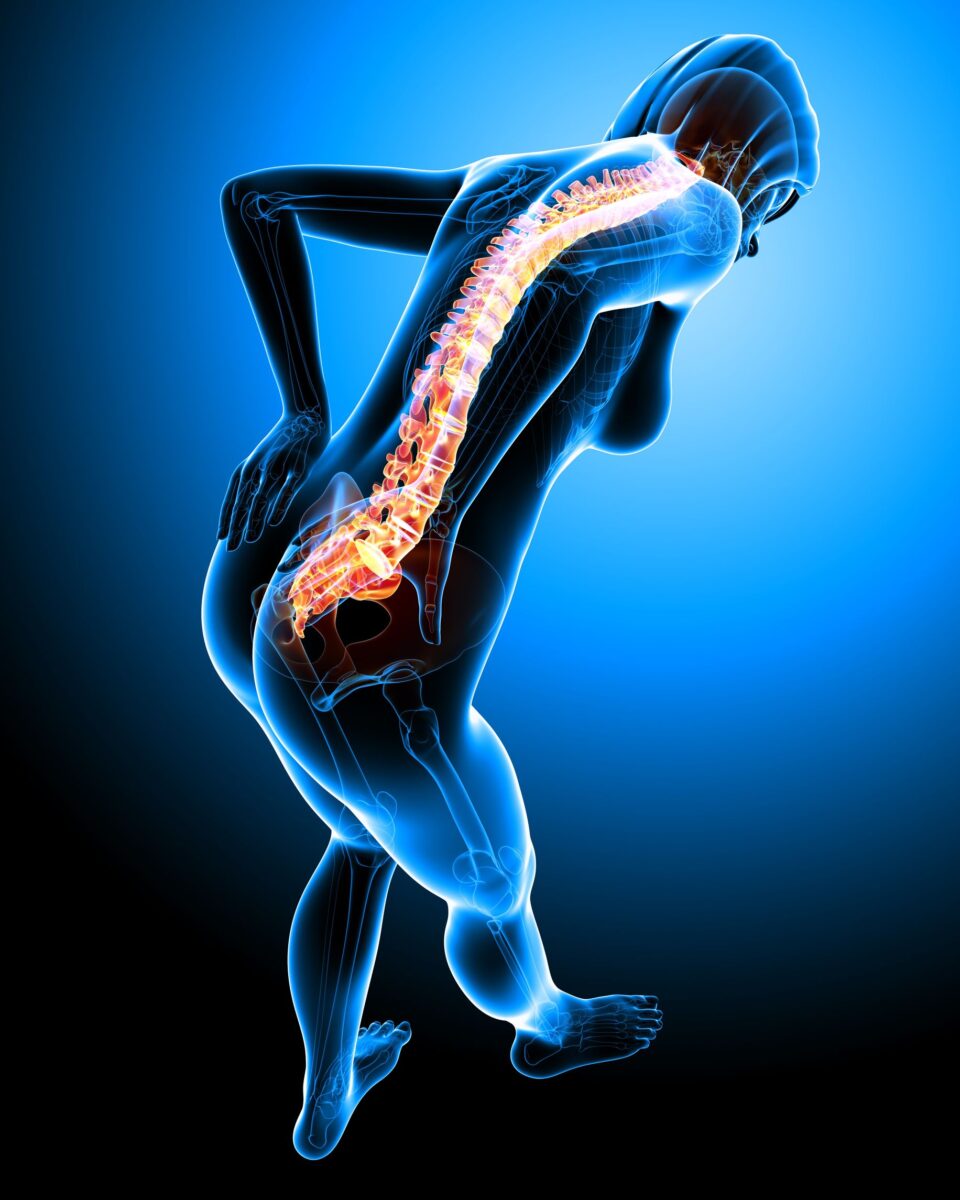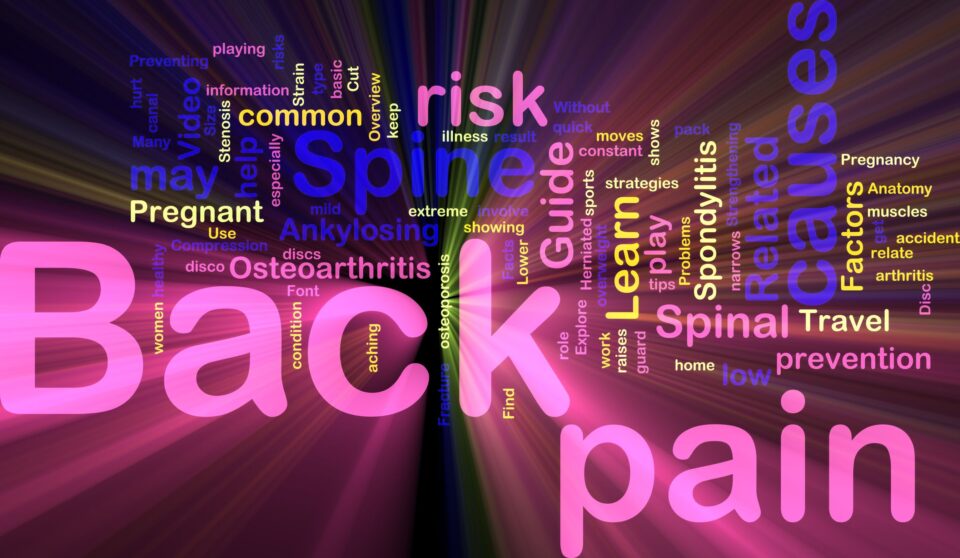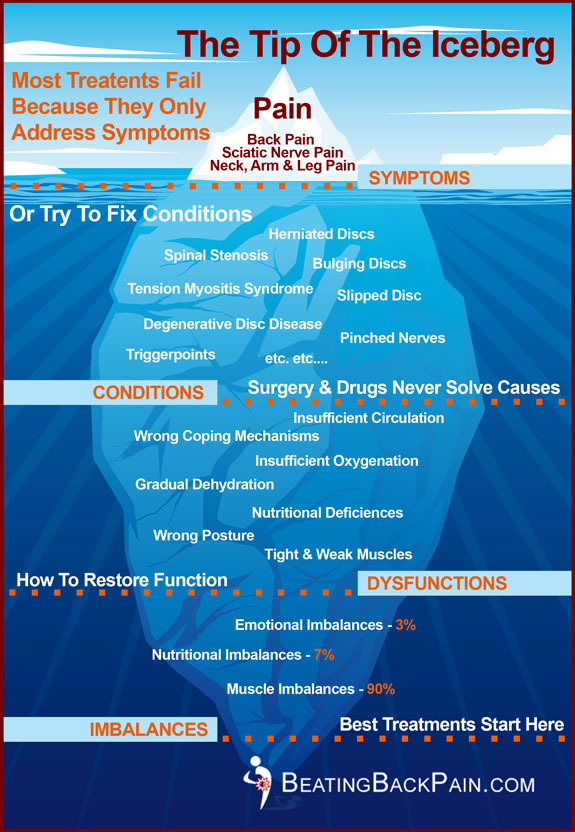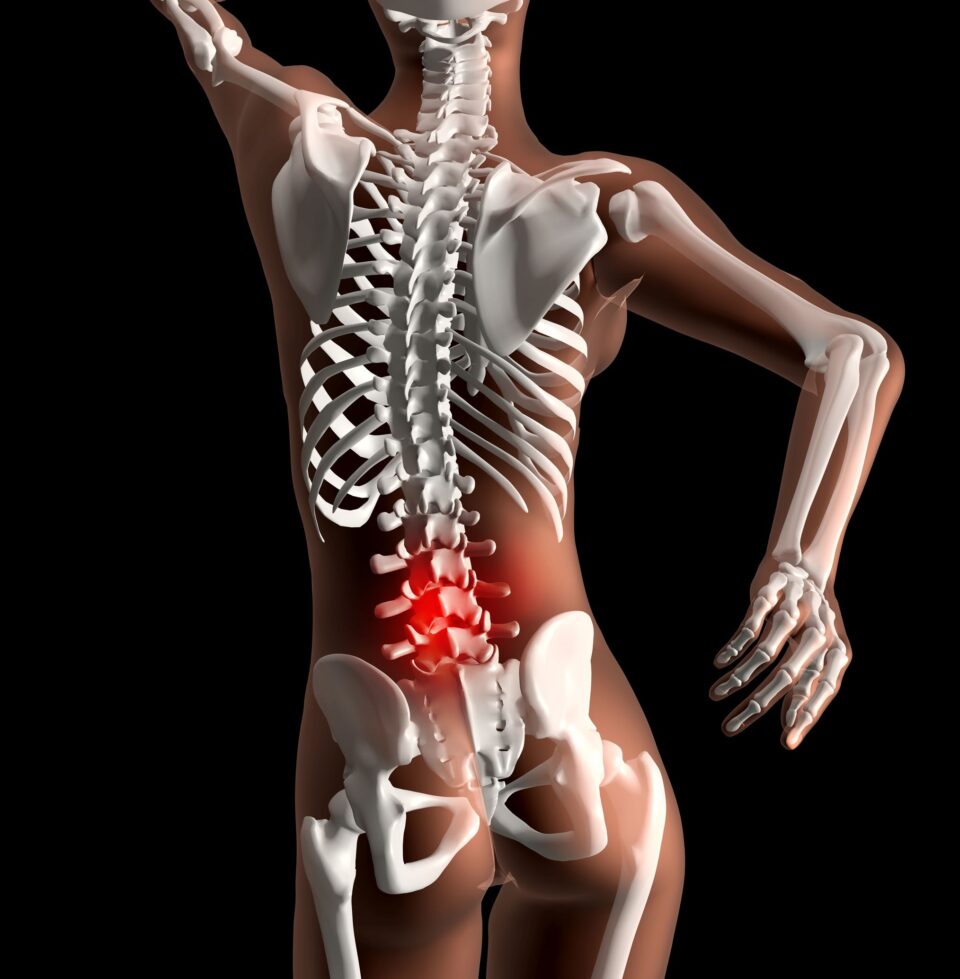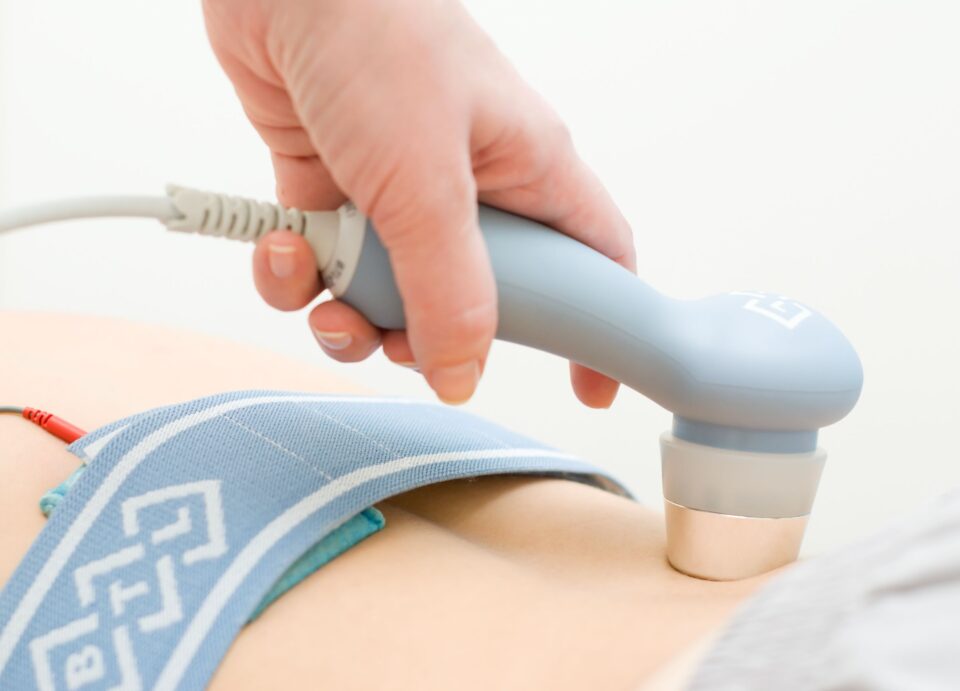Maybe it is time to quit smoking if you want to rid yourself of back pain?
What exactly is the connection between smoking and back pain? Is there even a causal relation? Does smoking cause back pain? This article will answer these 3 questions and give you actionable insights to alleviate your back problems, whether you smoke or not!
I recently read some articles about the connection between back pain and smoking and to be honest, I found them a bit unclear by themselves, but when I looked at them together, a very clear picture stood out, so allow me to show you my findings and save you the trouble of reading scientific mumbo jumbo that is hard to decipher.
From earlier research I did for Beatingbackpain.com on recovery from herniated disc surgery, I already know that surgical wounds in smokers take longer to heal and often do not heal quite as well as in non-smokers, and at the end of this article you will understand exactly why this is so and how you can apply these insights to getting rid of back pain or better healing from herniated disc surgery.
In this article you will find my rundown on a couple of research results, followed by a – hopefully – clear conclusion AND recommendation, because whether you smoke or not, our Beatingbackpain.com research conclusions are once again supported by the different studies regarding the connection between smoking and back pain, which means there is hope for you if you are still suffering from back pain, so read on!..
Let me first take you to a finnish study…
Finnish Study Back Pain and Smoking
The January 2010 issue of the American Journal of Medicine published the results of a Finnish review of 40 studies examining the relationship between smoking and back pain.
Dr. Rahman Shiri of the Finnish Institute of Occupational Health and colleagues had 1 simple question to be answered: Does Smoking Increase The Risk Of Low Back Pain?”
To answer that question, the Finnish researchers identified and reviewed 81 studies from around the world conducted between 1966 and 2009. The 81 studies involved smokers, former smokers, or never-smokers AND low back pain. Of those 81 studies 40 were carefully selected, together involving more than 300,000 adults and adolescents.
The studies reported various outcomes and the Finnish team subjected the data of the individual studies to further statistical analysis in order to figure out the strength and nature of relationships between back pain and smoking.
The Finnish determined that even though the data did not prove that smoking leads to low back pain, the analysis definitely showed a fairly modest association between smoking and low back pain. (don’t you love how scientists are careful to say anything?)
However, the authors pointed out that smoking itself does not necessarily cause chronic back pain. It is just as possible that people with chronic back pain smoke to alleviate the pain…. yeah, right, can someone tell me what I now know, thanks to statements like this?!….
The researchers also said it was possible that people who smoke usually develop certain common ergonomic behaviors such as coughing or stooping to find cigarettes that make them more prone to developing back pain… (are they now saying that coughing and stooping cause back pain?…)
But let me give you some more of the finnish outcomes:
“Current smokers (adolescents or adults) are at only 31% higher risk of low back pain compared with never smokers but this estimate is only for low back pain for one day or more during the past 12 months,” Dr Shiri said.
The smoking/low back pain association was strongest for “chronic or disabling low back pain” but, Shiri cautioned, none of the studies were designed to determine if there was a cause and effect relationship.
Scientists don’t know why smoking may be associated with lower back pain, although there are a number of possible explanations, including reduced blood supply to the spine, increased risk of osteoporosis, and the increased circulation of pain conducting chemicals in the blood from smoking.
The research suggests the young “might be more vulnerable to the effects of smoking than adults” because the low back pain/smoking association was stronger in adolescent smokers than adult smokers. Another explanation, the authors said, may be that it’s easier to identify and study true rate of low back pain in young people than in adults.
The research does suggest “the effects of smoking may be at least partially reversible,” since former smokers were less likely to seek care for low back pain than current smokers. More research into former smokers will be needed to make a more definitive claim, the authors said.
The Fins said that the exact association between smoking and back pain will have to be clarified in appropriate further studies.
Don’t you love people who set out to figure out something and then come back to tell you there is a connection, but how it really works they don’t know yet…
…It really makes me wonder how much these 81 studies have cost, if they delivered so little actionable knowledge. OK, never mind, let me get back on track, because we are looking for something solid to take home and act upon…
Back Pain and Smoking Finnish Conclusions
But let me pull together what they apparently did say:
– there definitely is a connection between back pain and smoking
– the connection is strongest for chronic or disabling low back pain
– it could have to do with reduced blood supply to the spinal area
– it could also be that the increased risk of osteoporosis in smokers leads to back pain
– it could have to do with increased circulation of pain conducting chemicals in blood from smoking
Smoking Gives More Back Pain For The Harder Workers
Another Finnish study said the association between smoking and back pain has been found to depend on the job of the subject, the more physically demanding the job, the higher the connection between back pain and smoking. source: Back pain and risk of fatal ischaemic heart disease: 13 year follow up of Finnish farmers (www.ncbi.nlm.nih.gov/pmc/articles/PMC2541781/pdf/bmj00465-0025.pdf)
6000 Kentucky Smoking Women Are Paying The Price Of More Back Pain
Then I found some research carried out by some bright minds from the School of Public Health of the University of Kentucky, who surveyed more than 6000 women to assess the association of smoking with the presence of various types of chronic musculoskeletal pain.
The survey respondents were categorized according to age, smoking status, and amount of daily cigarette intake. The respondents were asked about pain symptoms and whether they had received a diagnosis of a musculoskeletal pain disorder, such as fibromyalgia syndrome (FMS) or low back pain (LBP). Pain variables selected for analysis were the presence or absence of LBP, neck pain, sciatica, nerve pain, FMS, joint pain, and pain “all over the body.”
Daily smokers were 2 times more likely to report pain than nonsmokers. Those who smoked a pack or more a day also were most likely to report a high burden of chronic pain.
The authors noted that smoking-induced coughing increases abdominal pressure and back pain and that nicotine may decrease pain thresholds by sensitizing pain receptors. The study also showed a dose-dependent relationship between smoking frequency and having a chronic pain syndrome, suggesting that smoking cessation treatments could be helpful for chronic pain management.
Source Kentucky Study: MuscoSkeletal Network: www.musculoskeletalnetwork.com/display/article/1145622/1963052
Journal of Pain – www.jpain.org/article/S1526-5900%2811%2900419-6/abstract
Once again, the conclusions from the Kentucky Study:
– the more people smoke, the more often they have pain
– smoke more than a pack a day and your risk on high burden of chronic pain really increases
– nicotine may decrease pain thresholds by sensitizing pain receptors
National Spine Network – Smoking And Back Pain
Then I also saw a study regarding the National Spine Network database, about the Influence of smoking on the health status of spinal patients.
In this study data from 25,455 patients was analyzed to determine the relationship between smoking and back pain symptoms.
Conclusions of the National Spine Network Study:
– Smokers and nonsmokers both had had spinal symptoms for similar duration, but smokers reported more severe symptoms
– smokers were in pain for a greater proportion of time each day
– the smokers had lower physical and mental health status scores than did nonsmokers
John Hopkins Study on Back Pain And Smoking
Then there is the John Hopkins University Study on smoking and low back pain, which examined 1,337 physicians who graduated from Johns Hopkins University between 1948 and 1964. source: www.spine-health.com/wellness/stop-smoking/does-smoking-cause-low-back-pain
The John Hopkins study followed some participants for more than 50 years. Researchers discovered that smoking history, hypertension and coronary artery disease — all of which are risk factors for atherosclerosis, or occlusion of the arteries — were significantly associated with the development of low back pain.
The John Hopkins study results were reported at the 2001 annual meeting of the American Association of Orthopaedic Surgeons in San Francisco.
The most important outcome of this study is support for the theory that the mechanism of injury in low back pain is damage to the vascular structures of the discs and joints.
Numerous researchers have proposed a link between smoking and low back pain, but the exact nature of that link had remained largely untested in terms of long-term prospective studies. “Because we had the subjects’ medical records and answers from self-reported questionnaires over such a long period of time, a 53-year period of time for the oldest patients, we were able to determine if the risk factors, such as smoking or high cholesterol, preceded the development of the disease years later,” said Nicholas U. Ahn, Chief Resident in the Department of Orthopedic Surgery at the Johns Hopkins Hospital in Baltimore and co-author of the study.
“To prove a causative association from a long-term prospective study is very powerful because one can show that the cause occurred before the effect as opposed to the other way around,” Dr. Ahn explained.
The study concluded that development of lower back pain was significantly associated with smoking history and hypertension, and development of lumbar spondylosis was significantly associated with smoking history, and hypertension and high cholesterol. No significant association was reported between diabetes and lower back pain or lumbar spondylosis.
Conclusions of the John Hopkins Study:
– smokings leads to damage to the vascular structure of discs and joints, which leads to back pain.
MuscoskeletalNetwork.com on Back Pain and Smoking
One last interesting study put together a lot of research conclusions regarding Smoking and Pain, all on one page www.musculoskeletalnetwork.com/display/article/1145622/1963052
Journal of Pain – www.jpain.org/article/S1526-5900%2811%2900419-6/abstractLet me give you the conclusions of American Academy of orthopedic Surgeons.
Here’s what they say:
“Tobacco smoke contains more than 4,000 substances that can damage your heart and blood vessels and cause cancer.
Smoking also contributes to chronic pain by increasing fatigue and muscle weakness.
Carbon monoxide in tobacco smoke replaces oxygen in your red blood cells. Less oxygen means less energy and fewer nutrients for your body tissues.
Carbon monoxide has a much higher affinity for hemoglobin than does oxygen (210 times more), and high percentages of carboxyhemoglobin in the blood impairs the normal transport of oxygen by the blood.
Cigarette smoke contains over four thousand chemicals with some being proven carcinogens.
Among the many harmful ingredients are nicotine, tar, carbon monoxide and arsenic.
Smoking alters anti-oxidant levels in the blood and has the ability to cause genetic damage.
It causes chronic obstructive pulmonary disease, peripheral arterial disease and contributes to hypertension, osteoporosis, musculoskeletal injury, diabetes and many cancers.
Smoking also stimulates the antidiuretic hormone with its associated problems.
Whenever you smoke your muscles and nerves are exposed to these potentially harmful influences, and you risk infection, poor wound healing, injury, disability, deformity and possible amputation.
However smoking cessation will result in immediate health benefits.
While most people equate smoking deaths to cancer and lung disease, in fact many more people will die from circulatory conditions from smoking than die from cancer or other lung diseases.
Also, in general, they will die at much younger ages from these problems.
We would have many more lung cancers than we do if smokers could live long enough to get them.
When many people with fatal heart attacks or strokes are autopsied, there are often precancerous lesions found that indicate that if these people had a few more years to live they would have eventually succumbed to these smoking induced diseases.
As for heart and other circulatory diseases, the two chemicals in cigarettes that stand out as the biggest problems are nicotine and carbon monoxide.
Nicotine, besides being addictive, has very powerful effects on arteries throughout the body. Nicotine is a stimulant, speeding up the heart by about 20 beats per minute with every cigarette, it raises blood pressure, is a vasoconstrictor – which means it makes arteries all over the body become smaller making it harder for the heart to pump through the constricted arteries – and it causes the body to release its stores of fat and cholesterol into the blood. The heart has to work harder to overcome all of these effects. To work harder the heart, like every other muscle in the body, needs extra amounts of oxygen for the additional workload. The oxygen has to be transported through the blood.
But carbon monoxide from tobacco smoke literally poisons the oxygen carrying capacity of the blood. So this results in the heart having to work harder to get more blood to itself to work harder, because it’s working harder. This is a circle. A vicious and deadly circle when it comes down to it.
But this clogging/clotting effect is not limited to just major organs like the heart or brain.
These chemicals affect arteries throughout the entire body. These affects may not be as deadly as cutting off circulation to the heart or brain, but in a real way they can show the true potential of the grip of the nicotine addiction.
Peripheral circulation, arteries going to the extremities are also highly susceptible to the vasoconstrictor effects of nicotine as well as the increase of clots and clogging risks posed by smoking.
Smoking is a primary cause of much of the peripheral vascular disease seen as well as a powerful aggravating factor for people who have other preexisting conditions causing circulation problems to the extremities.
One condition though stands out as being truly unique and in many ways, demonstrates the real addictive nature of nicotine better than any other cause. The condition is known as Berger’s Disease (thromboangiitis obliterans.)
Buerger’s Disease is a condition where there is a complete cutoff of circulation to the finger or toes, resulting in gangrene.
Smokers of all ages have been shown to have a higher risk of suffering tendinitis, bursitis, sprains or fractures. Efficient muscle function is also threatened due to the harmful effects of smoking on lung growth and function which results in less available oxygen for muscles during activity. Smokers are three times more likely to suffer from short breath than non-smokers.” source: American Academy of Orthopedic Surgeons, 2000.
Now let me wrap that up for you.
What You Must Know about Smoking and Back Pain
Smoking brings nicotine and carbon monoxide into your body, which together basically ruin your healthy circulation and your blood’s oxygen carrying capacity. On top of that there are around 4000 more chemical toxins that enter your body as well, totally changing and ruining the anti-oxidant levels of your body.
Thanks to the relatively new medical field of triggerpoint therapy, we now know that myofascial triggerpoints are always located in oxygen deprived parts of your body. If we then read what the carbon monoxide (that you inhale with smoking) does to the oxygen carrying capacity of your blood, it is easy to understand how smoking and the development of pain are connected.
Then if you also read about how your tissue is literally damaged by all the chemical toxins, it is also easy to understand how discs will deteriorate. To make things worse smokers also have weaker muscles, meaning that the core muscles that are already weak due to lack of use and training in most non-smokers, will even be weaker in smokers.
What To Do About Smoking And back Pain?
The no-brainer is to quit smoking. Then I would suggest you also work on increasing the oxygen carrying capacity of your blood. Funny enough I have written a book on the different topic of cancer that explains how to do this perfectly, but because that is out of scope for this website, I will leave that out of this article, but maybe I should reconsider that, allow me some time to think that over again… (FYI: My younger brother had half of his liver taken out due to liver cancer and survived, my mother in law had breast cancer and survived – that’s what got me going in that direction – in case you want to know more, drop me an email see below for address)
Increasing circulation, just by adding some healthy moves to your daily exercise regimen, will in itself already have a beneficial effect on any person, whether you smoke or not.
The Beatingbackpain Program consists of a number of proven exercises that have already helped many people. These exercises increase circulation, and help you increase oxygen levels all throughout your body and that is just what you need to promote healing and to get rid of pain. I might shortly release the Beatingbackpain.com Tibetan 5 Back Pain Exercises That Will Rejuvenate Your Back And Body, but for now the Back Pain GoodBye! program will have to do.
If you are interested in my other book on how to increase levels of oxygen in your blood, drop me an email at rffeddes (at) beatingbackpain.com.
Wishing you the very best!



